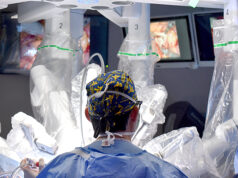
Investigators behind the BIOPATTERN trial hope that their work will shape the understanding of which proteins and biomolecules play key roles in the progression of coronary artery disease towards heart attack, and could pave the way for a precision approach in the treatment of cardiovascular disease. Chief investigator in the trial, Stephen Hoole, a consultant cardiologist at Royal Papworth Hospital (Cambridge, UK), offers an insight into the project.
Broadly define the concept of “precision medicine”—how does this differ from current models of care?
Precision medicine targets treatments to specific patients with defined disease traits to improve the therapeutic effect; the better you understand what is driving the disease in an individual, the better you can target current therapy or develop new therapies to improve their health. At present, medication to control cardiovascular disease focuses on targeting standard risk factors prevalent within a population—namely high blood pressure, high cholesterol, diabetes and smoking. Yet the natural history and presentation of cardiovascular disease can vary greatly, and in many patients it will still progress despite efforts to control these standard risk factors. Given the prevalence of coronary disease, advances in precision medicine could really have an impact. Precision medicine is mainstay in other areas like oncology—just less so in cardiovascular disease and we hope new innovations such as this may close the interdisciplinary knowledge gap.
How does the Liquid Biopsy System (LBS, PlaqueTec) work?
The LBS system is a single use coronary catheter. The catheter is designed to be positioned under fluoroscopy across an identified coronary lesion, then once in place the sampling ports and baffle clusters can be unsheathed to create local mixing to gather biomolecules in the outer edges of flow or on the endothelial wall, in the so-called boundary layer. Vacuum pressure is then applied at the handle which simultaneously draws four blood samples from the sampling ports at different points in the coronary artery—upstream and downstream of the stenosis. The samples are collected and sent for analysis. By comparing the concentration of numerous biomolecules in downstream versus upstream samples we can build a plaque-specific biochemical profile for that patient’s disease. We can enrich the profile with optical coherence tomography (OCT) imaging, genetic and clinical data to build up a detailed understanding to help stratify patients into sub-groups with certain disease profiles. We hope these site-of-disease insights will help inform and/or justify particular therapy for certain patients and identify new targets for novel or re-purposed medicine for some patients. In terms of intervention, in time there is potential to develop an on-table point-of-care test for samples obtained using the LBS that may guide decisions such as whether to stent or even which type of stent to use.
How straightforward is the sample collection process?
If you select the right vessel of the right size and anatomy, avoiding tortuosity, it is pretty straightforward to position the device and collect the samples. The device is delivered over a standard 0.014” guide wire and is 6Fr guide catheter compatible, so there is certainly potential for wider use once the clinical utility is established. The sample collection takes about five minutes, then the analysis depends on what you are analysing. As mentioned, a fast point-of-care test could be really useful in future, but in the BIOPATTERN trial the samples are undergoing an extensive battery of tests including high-throughput proteomics which will measure thousands of proteins in each sample and this takes a couple of weeks to process.
What are the aims of the BIOPATTERN trial?
The core aims of the trial are to confirm the device is safe and works as intended and also to confirm some of the trans-plaque gradients of certain proteins that were seen in an earlier pilot study. In addition, as discussed above, a big aspect of the trial is exploratory, looking at thousands of different proteins in each sample to better understand the local plaque expression of biomarkers that we hope will better inform us about the biological nature of plaques, what governs their progression towards rupture, how these aspects vary between patients and to identify new candidate treatment targets. There are also specific sub-studies, including pressure-wire derived coronary physiology data, to also understand how plaque biomarkers might influence microvascular dysfunction in trial participants. We have four sites open and recruiting and will open more sites next year with a view to completing recruitment of the full 300-participant cohort in early 2025.













